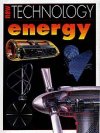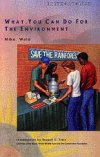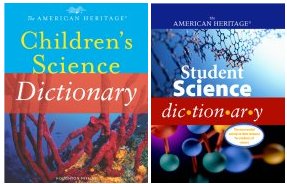Cold House, Hot House, Green House Additional Information
To learn more about how to save energy at home or school, see www.ase.org/section/_audience/consumers/kids/ (Alliance to Save Energy) and www.energyquest.ca.gov/saving_energy/ (California Energy Commission).
Information about “cool” roofs can be found at www.lbl.gov/Science-Articles/Archive/sb/Aug-2004/3_coolroofs.html and heatisland.lbl.gov/CoolRoofs/ (Lawrence Berkeley National Laboratory).
You can learn more about Village Homes in Davis, Calif., at www.rmi.org/sitepages/pid209.php (Rocky Mountain Institute) and www.lgc.org/freepub/land_use/articles/energy_betterdsgn.html (Local Government Commission).
To find out more about near-zero-energy homes, go to www.ornl.gov/info/press_releases/get_press_release.cfm?ReleaseNumber=mr20040811-00 (Oak Ridge National Laboratory).
Information about why wood-frame houses are better for the environment is available at www.newswise.com/articles/view/506758/ (U.S. Department of Agriculture Forest Service, Forest Products Laboratory).
Perkins, Sid. 2004. Paved paradise? Science News 166(Sept. 4):152-153. Available at http://www.sciencenews.org/articles/20040904/bob8.asp.
Sohn, Emily. 2004. Spinach power for solar cells. Science News for Kids (June 9). Available at http://www.sciencenewsforkids.org/articles/20040609/Note2.asp.
______. 2004. Drawing energy out of wastewater. Science News for Kids (March 17).
Available at http://www.sciencenewsforkids.org/articles/20040317/Note2.asp.
Weiss, Peter. 2004. Warm reflections: Window tint kicks in when it’s hot. Science News 166(Aug. 21):118. Available at http://sciencenews.org/articles/20040821/fob7.asp.
A list of online energy education resources can be found at www.eia.doe.gov/kids/onlineresources.html (Energy Information Administration, U.S. Department of Energy).
Books recommended by SearchIt!Science:
 |
Energy — Nigel Hawkes
Published by Twenty-First Century Books/Millbrook Press, 1994.
Ever since people first discovered fire, they have been using the earth’s energy for light, heat, and cooking. We haven’t always used this energy wisely, though, and the earth may run out of important energy resources like oil, coal, and gas. The solution lies not only in conserving these resources but also in finding new sources of energy. With large color photographs, diagrams, and drawings, this book features short explanations of some of those new sources. Technology is being used to capture usable energy from biomass and atomic power. An introduction to how we might get energy resources from outer space is offered. |
 |
What You Can Do for the Environment — Mike Wald
Published by Chelsea House, 1993.
If you’re like most people, you probably produce a pound of garbage a day. Worldwide, we are producing 5 billion pounds of garbage every day. No wonder our planet is becoming overrun with trash and pollution! It’s a big problem and doing the right thing can get a little complicated. This book shows you the best way to help our environment and points out that some environmental “solutions” are actually myths. For example, many people have stopped using disposable diapers because they think that landfills are overflowing with them. But diapers are only a small part of the problem. What takes up the most space in a landfill? Paper—and it doesn’t degrade as quickly and as easily as you may think. Black-and-white photographs show our various environmental problems—from water and air pollution to global warming and the greenhouse effect. Learn how you can get involved in ways that really make a difference. |
Power Words
infrared light Electromagnetic radiation that is invisible and has wavelengths that are longer than those of visible light but shorter than those of microwaves. All objects absorb and give off infrared light.
microclimate The climate of a small, specific place within a larger area. An area as small as a hill or a city park can have several different microclimates. Microclimates
depend on many factors, such as sunlight, shade, wind, temperature, and humidity.
solar cell A device that changes sunlight into electricity. Solar cells are used to supply power to satellites, calculators, and other devices. They are also used as a source of
electricity in areas that have no system of wires to deliver electricity. Solar cells are also called photovoltaic cells.
Copyright © 2002, 2003 Houghton-Mifflin Company. All rights reserved. Used with permission.
